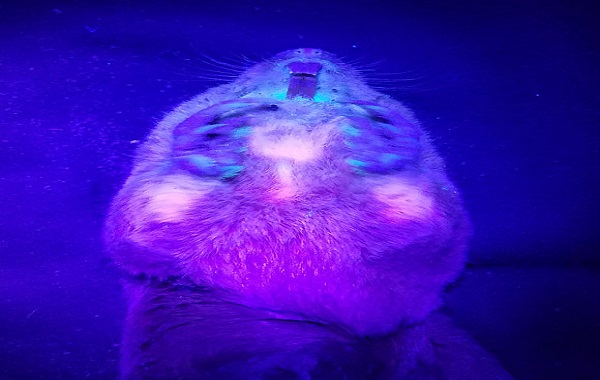Scientists Observe Biofluorescence in Burrowing Mammals for First Time
An international team of researchers led by the University of Georgia has documented ultraviolet biofluorescence in live southeastern pocket gophers (Geomys pinetis) and in museum specimens of four additional gopher species.
“Ultraviolet (UV) biofluorescence has been extensively documented in plants, invertebrates, and vertebrates,” said lead author Dr. J.T. Pynne from the D. B. Warnell School of Forestry and Natural Resources at the University of Georgia and colleagues.
“Among vertebrates, biofluorescence is widespread in fish, amphibians, and birds. However, documented occurrences of biofluorescence are limited in reptiles and mammals.”
“Biofluorescence in mammal pelage previously was known from the family Didelphidae (New World opossums), but recently was documented in the European hedgehog (Erinaceus europaeus), New World flying squirrels (Glaucomys sp.), the platypus (Ornithorhynchus anatinus), and the family Pedetidae (springhares).”
“Presence in monotremes and metatherians suggests biofluorescence may be a retained characteristic from the nocturnal lifestyle of early mammals, but occurrence in multiple eutherian lineages raises questions about the evolutionary and ecological significance.”
In the new study, Dr. Pynne and co-authors used a handheld UV light to determine presence and extent of fluorescence on the pelage, bare skin and in the cheek pouches of captured southeastern pocket gophers.
“When held under UV light, all live individuals examined fluoresced bright orange-pink on the venter with duller fluorescence on the dorsum,” they said.
“Biofluorescence was brighter on the legs and chin where pelage color is lighter. Some individuals also fluoresced blue around the mouth and vibrissae.”
The researchers also tested specimens of four pocket gopher species — plains pocket gophers (Geomys bursarius), desert pocket gophers (Geomys arenarius), northern pocket gophers (Thomomys talpoides), and yellow-faced pocket gophers (Cratogeomys castanops) — archived at the Georgia Museum of Natural History.
The specimens fluoresced similar colors, though visual intensity was reduced relative to the live individuals examined.
“While the reason for pocket gophers’ and other animals’ ability to glow under UV light is still up for debate, it can serve as a unique introduction to the animals’ world,” Dr. Pynne said.
“With UV flashlights readily available, most anyone can highlight a foraging opossum in their backyard, for example, or watch how different insects light up at night.”
The findings were published in The American Midland Naturalist.
Source: sci-news
Dolphin ancestor’s hearing was more like hoofed mammals than today’s sea creatures
Dolphin ancestor’s hearing was more like hoofed mammals than today’s sea creatures
Scientists Observe Biofluorescence in Burrowing Mammals for First Time

